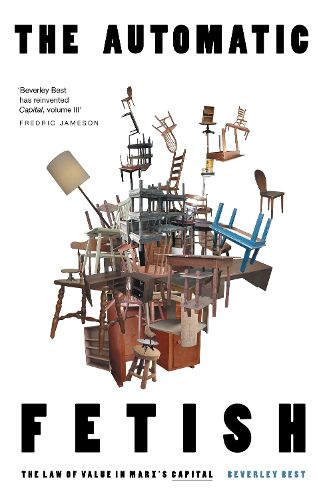Readings Newsletter
Become a Readings Member to make your shopping experience even easier.
Sign in or sign up for free!
You’re not far away from qualifying for FREE standard shipping within Australia
You’ve qualified for FREE standard shipping within Australia
The cart is loading…






The Automatic Fetish demonstrates the clarity and coherence of Marx's critique in Capital III against the perennial tendency to shrug it off as a posthumous bundle of notes. Far from an incomplete theoretical system, Best identifies and elaborates a specific theory of movement and appearances (a "perceptual physics") that lies at the heart of the matter of the third volume of Capital, and that forms the conceptual bridge between Capital I, II, & III. In addition to the coherence of Marx's project, Best demonstrates the need for demonstration: Marx's theoretical system in Capital cannot be posited or described; rather, it must be demonstrated, and this is what Best does, step by step, through an exposition of each Part of Book Three. Neither a "back to basics" nor newfangled reconstruction, The Automatic Fetish eschews novelty to show why, once again, Marx deserves to be read carefully. By "unreconstructing" Marx, Best demonstrates how the analytical power of Marx's critique is as relevant today as it ever was for the analysis of the capitalist mode of production, which is still in the process of immiserating and destroying everything there is. The Automatic Fetish is an apologia of Marx without apologies.
$9.00 standard shipping within Australia
FREE standard shipping within Australia for orders over $100.00
Express & International shipping calculated at checkout
The Automatic Fetish demonstrates the clarity and coherence of Marx's critique in Capital III against the perennial tendency to shrug it off as a posthumous bundle of notes. Far from an incomplete theoretical system, Best identifies and elaborates a specific theory of movement and appearances (a "perceptual physics") that lies at the heart of the matter of the third volume of Capital, and that forms the conceptual bridge between Capital I, II, & III. In addition to the coherence of Marx's project, Best demonstrates the need for demonstration: Marx's theoretical system in Capital cannot be posited or described; rather, it must be demonstrated, and this is what Best does, step by step, through an exposition of each Part of Book Three. Neither a "back to basics" nor newfangled reconstruction, The Automatic Fetish eschews novelty to show why, once again, Marx deserves to be read carefully. By "unreconstructing" Marx, Best demonstrates how the analytical power of Marx's critique is as relevant today as it ever was for the analysis of the capitalist mode of production, which is still in the process of immiserating and destroying everything there is. The Automatic Fetish is an apologia of Marx without apologies.